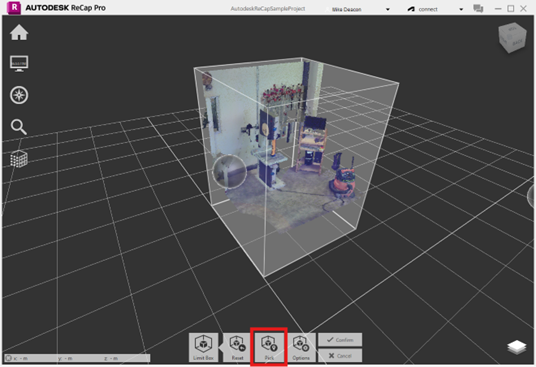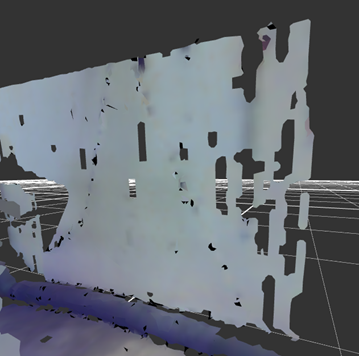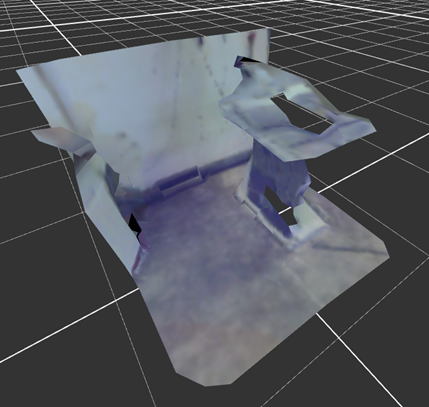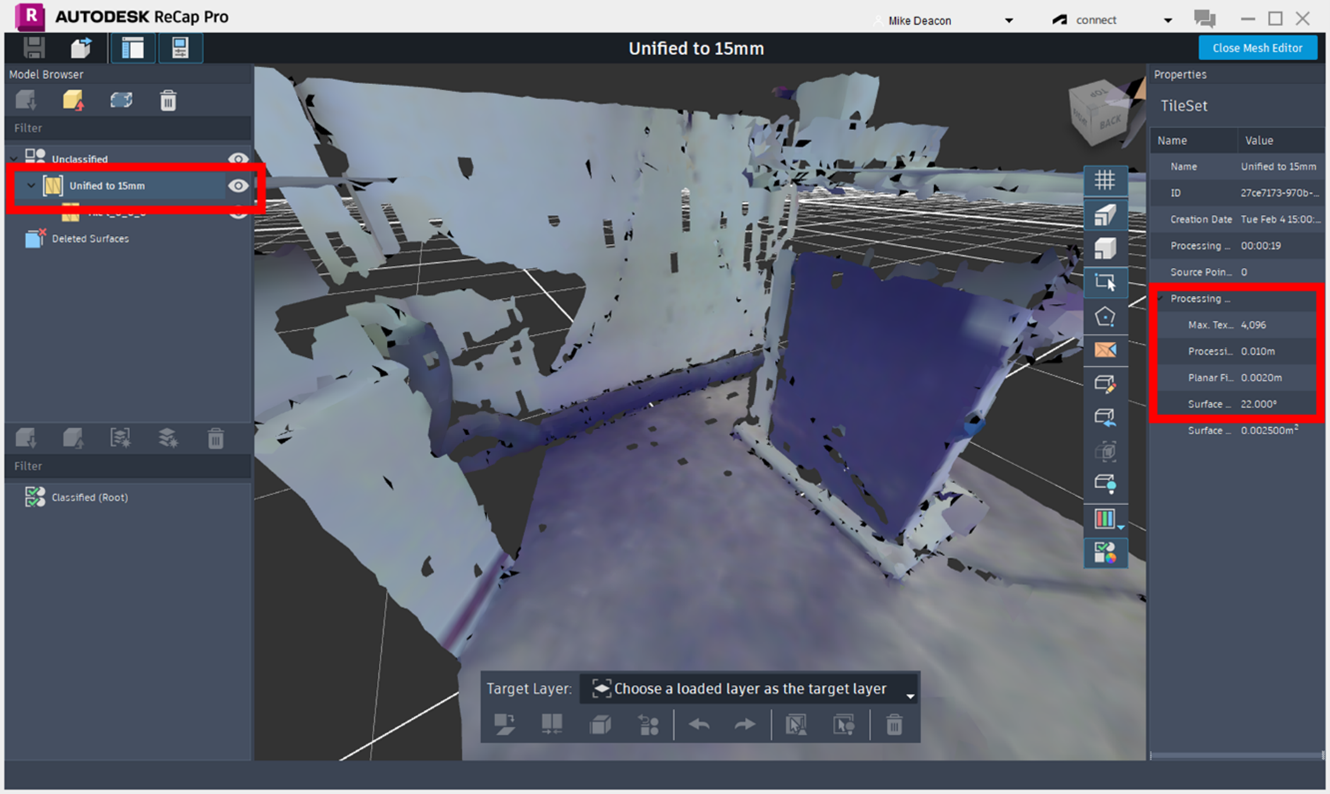Best Practices for Scan to Mesh Settings
In some circumstances, the best mesh settings for a point cloud might not be known. This is the case if the source of the dataset is unknown, or if the results from the preset settings do not reflect the quality of the point cloud data.
In these cases, the following workflow can help to quickly identify the best settings.
Step 1: Define a Sample Area
Use the Limit Box, Regions, or Classification tools to reduce the visible points down to a small number. For example, focus on a specific object intended to mesh to a high detail, or to an area of the point cloud that is indicative of the rest of the project.
Tip: Using the function to set the limit box by Pick is a good way of reducing the number of visible points quickly.

Step 2: Save the Project
Only the visible points will be meshed. The Scan to Mesh Local process requires a save before mesh creation.
Step 3: Choose a Default Settings Profile
Choose a settings profile as a starting point. This provides a good baseline as to whether an increase or decrease of the mesh density settings is required.
Once an acceptable setting is found, click Submit to convert the visible points into a mesh model.
Tip: Before clicking Submit, change the mesh name to include the chosen Resolution value. This will make it easier to later identify each mesh run.
Step 4: Review Results in the Mesh Editor
Launch the Mesh Editor to view the model.
If the resulting mesh either fails to complete, has unexpected holes, or tearing (as shown in the following image), then these are signs that the mesh density is too high for the point cloud density. In this case, try choosing a Resolution value that is larger than the previously attempt.

If the resulting mesh model looks very inaccurate, or seems to not represent the point cloud well (as shown in the following image), then this is a sign that the Resolution value can be set to a lower value.

Tip: Identify the setting values by clicking on the Tileset Group, and reviewing the properties palette.

Step 5: Repeat until Satisfied
Each time the mesh is processed, a new model is added to the Unclassified section of the Mesh Editor. From here load multiple meshes into view. this makes it easy to compare the different versions of the mesh.
Once acceptable settings are found, return to the point cloud view and switch on the rest of the points, before running the scan to mesh.
